- Home
- Conn Iggulden
The Dangerous Book of Heroes Page 42
The Dangerous Book of Heroes Read online
Page 42
His interest in the film business vanished as quickly as his infatuation with planes. The end of the war, with so many dead, had brought about a resurgence of Spiritualism, and Houdini was appalled at an industry that made money out of the pain of others. He knew all the tricks of course—he had once used them himself. Even so, he understood the desperate need that made people believe. He longed to speak to his mother again and attended dozens of séances in the hope of meeting someone with real talent. He also made a pact with his wife that they would try to reach each other after death. To that end, he gave her two passwords: “Rosabell” and “believe.” A true medium would be able to reveal them.
He found no one of real talent, and in anger he set out to debunk the entire industry. On one famous occasion he traveled to see a Cleveland medium, George Renner, who claimed to have spirits speak through a megaphone. In the darkness, Houdini put lampblack on the mouthpiece and when the “spectral voices” had stopped and the lights came up, there was Renner with blackened lips, blissfully unaware that he had been exposed.
To his stage act, Houdini now added a section on Spiritualism, where the audience could see what he did, while the people at the table wore sacks on their heads. It was a success, and in response to his act and his written articles, lawsuits for defamation were brought against him from the prominent Spiritualists of the day—at one point adding up to a million dollars. Houdini engaged his own lawyer and carried on. He never tired of revealing the lies of those who claimed to speak to the dead, read tea leaves, or tell the future from the stars. On astrology, he said: “They cannot tell from a chunk of mud millions of miles away what is going to happen to me.” He even proposed a law to have fortune-telling made illegal, but it was rejected.
Using only what he called “natural methods,” Houdini proved that the mystical powers claimed by an Indian fakir were false. Like that performer, Houdini had himself sealed into a watertight coffin, then submerged in the swimming pool of New York’s Hotel Shelton. Inside he had a telephone in case it went wrong. Doctors estimated that he had enough air for only three to four minutes, but he survived ninety underwater, almost twice what the fakir had managed. Once again, Houdini had shown that “mystical powers” could be equaled or beaten by strength and ingenuity. The Spiritualists hated him.
At the same time, he perfected his masterpiece, which he called the Chinese Water Torture Cell. In it, he was hung upside down underwater, chained, and manacled. Years of physical strain were beginning to have their effects, and it was his most difficult stunt, but he did it over and over again, to delighted audiences. At last, a bone in his ankle snapped and he had to abandon the water torture for a time until it healed.
His act continued despite the injury, and as always, Houdini pushed himself to the limits of endurance, driven by some need to go faster and further than he ever had before. He and Bess took the show to Montreal in 1926. He gave a lecture on the tricks of Spiritualism there, and afterward three young fans came to see him backstage. One of them brought a picture he had drawn of Houdini. Another was a keen amateur boxer.
Resting his broken ankle, Houdini was lying down reading letters when they approached him. The boxer asked if it was true that Houdini could take any punch. Houdini was distracted, but he nodded. Without warning, the young man hit him four times in the abdomen. Houdini bore up well and sent them away with smiles, but he felt terrible pain, which only grew as the hours passed. Regardless, he traveled to Detroit for the next show, arriving with a temperature of 102 degrees. It was 104 by the time the show was due to begin. The water torture was out because of his ankle, but he managed to finish the rest of the show. He was close to collapse, but even then refused to see a doctor. At last, when it was clear he was dying, he was rushed to the hospital. His appendix had been ruptured and peritonitis had set in, the organ rotting inside him. His last words to his brother were “I’m tired of fighting, Dash.”
After his death, Bess offered ten thousand dollars to any medium who could reach her husband. She saw hundreds, but not one was able to give her the code words Houdini had arranged. His vast library on magic was given to the Library of Congress.
Through courage, skill, and showmanship, Ehrich Weiss took himself and his family from poverty to riches and fame. Houdini was in every sense the ultimate self-made man.
Recommended
Escape! The Story of the Great Houdini by Sid Fleischman
The Great Houdini by Beryl Williams and Samuel Epstein
Scott of the Antarctic
After Captain Cook’s 1774 circumnavigation of Antarctica there had been only the one determined exploration south, despite the continent being first sighted in 1820 by Britons Bransfield and Smith.
James Clark Ross, discoverer of the North Magnetic Pole, sailed south to search for the South Magnetic Pole in his great expedition of 1839–43. He forced his two ships, HMS Terror and HMS Erebus, through the pack ice south of New Zealand to discover and chart the Ross Sea and the active volcano Mount Erebus, to determine that the Magnetic Pole was inland, and to land on the islands to claim the territory for Britain.
In 1898, the Royal Geographical Society and the Royal Society announced a new scientific expedition to explore Antarctica inland from the Ross Sea. Commander Robert Falcon Scott was appointed leader. Thirty-two-year-old Scott was a modern and innovative officer, carving a promising career for himself in the Royal Navy. He specialized in the new torpedoes, marine electronics, and mines. The Admiralty commented that Scott would be “relinquishing a brilliant Navy career” in commanding the Antarctic expedition, but the First Sea Lord recommended him, and his commanding officer wrote: “He is just the fellow for it, strong, steady, genial, scientific, a good head on his shoulders, and a very good naval officer.”
Officers and seamen from Scott’s Royal Navy ship volunteered to join him in the new 172-foot Discovery, while the balance of the expedition consisted of merchant navy officers, seamen, and scientists. Scott ran the expedition along modified navy lines, and despite recent suggestions, it was completely successful.
Other Antarctic expeditions of the era—led by Amundsen (Norwegian), Shackleton (British), Borchgrevink (Norwegian/British), Gerlache de Gomery (Belgian), Mawson (British/Australian), Drygalski (German), and Nordenskjöld (Swedish)—suffered insurrection, mutiny, shipwreck, and even insanity. Antarctica is perhaps the harshest environment in the world, yet Scott’s two explorations, with more than one hundred scientists, officers, seamen, soldiers, sledgers, dog handlers, skiers, and photographers, had not one major problem.
Australian scientist Louis Bernacchi wintered with both Borchgrevink (1899–1900) and Scott (1901–4). He recorded that Scott’s broad formality and discipline “helped to preserve an atmosphere of civilised tolerance such as has seldom been found in polar expeditions” and was “of infinite benefit.”
As he made his preparations, Scott sailed first to Norway for advice from Fridtjof Nansen, scholar and great Arctic explorer of the time. Nansen had made the first crossing of Greenland by man-hauling his sledge and attempted to reach the North Pole using dogs. He recommended dogs but admitted that over rough ice they were not much use—in those conditions only man-hauling would get you through. Scott and Nansen became good friends, and Scott followed his mentor’s advice. His second in command, Lieutenant Armitage, had also made several Arctic sledging trips; he recommended Siberian ponies. Previously, James Clark Ross and Leopold McClintock of the navy had made a 1,175-mile Arctic journey averaging nearly 17 miles per day man-hauling. As no one knew the conditions of inland Antarctica, Scott took dogs, ponies, and motor sledges and used all four methods of sledging.
The Discovery left Britain in August 1901, bound for Antarctica. Before he sailed, Scott was made a Member of the Royal Victorian Order by the newly crowned King Edward VII and Cadbury supplied thirty-five hundred pounds of chocolate.
The expedition crossed the Antarctic Circle on January 3 and landed at Cape Adare to inspect Borchgrevink’s hut, w
here Bernacchi had completed the only previous wintering-over in Antarctica. In the Discovery, Scott explored the limits of the Ross Sea: eastward he discovered King Edward VII Land, while southward all was bound by the Great Ice Barrier (Ross Ice Shelf).
The ice barrier reaches five hundred feet high from sea level, in massive vertical cliffs of floating ice. It stopped Ross in 1843 and has stopped every ship since. In a natural inlet in the ice at the Bay of Whales, Scott sailed the Discovery south for twelve more miles to reach the southernmost water in the world. Beneath twelve-foot cliffs, a landing was made for the first scientific journey inland by Armitage and Bernacchi.
Scott, followed by third mate Ernest Shackleton, made the first Antarctic flights there in February 1902, in a British army hydrogen balloon named Eva. They rose to eight hundred feet, tethered by cable in what Scott termed a “very inadequate basket,” to take the first aerial photographs of Antarctica. Seals basking on the ice were slaughtered in great numbers. Scott—like Cook before him—ordered their killing for fresh meat, a vital preventative against scurvy. Nowadays, we know a lot about scurvy, but at the beginning of the twentieth century, little more was known than at the time of Cook, in 1770.
Scott established winter quarters at Hut Point on the southern promontory of Ross Island, next to the ice barrier. In two weeks the expedition erected the main thirty-ton hut, two magnetic huts, and kennels for twenty-three huskies (from Nansen’s supplier). After landing stores and scientific equipment, sledge-training parties with dogs immediately set out into the white wilderness, and skiing exercises began.
For the skiing, only minimal training was required. Norwegian skis then weighed ten pounds each, and a single pole was used. It took longer to organize the dogs, yet within a month the first dog-sledge expedition set off; within two months they were on the ice barrier, laying stores depots for the following summer’s explorations. Scott learned quickly.
After the winter months of total darkness, scientific parties set out in the bitter-cold spring, sledge training continued, and more depots were laid. Navigation was difficult so close to the Magnetic Pole, so Scott improvised. He invented a shadow scale for navigating by the sun and devised a simple way to calculate the sun’s daily declination changes. He also invented tapered sledge runners, a face hood to deflect the wind when sledging, and a trawling net for the marine scientists. Some of his inventions, including the “face funnel,” are used today.
For the southern exploration, Scott selected a party of three, which was considered safer than two for crevasse work and emergencies. As well as himself, he chose Dr. Edward Wilson, a physician, scientist, and artist, and Ernest Shackleton. The three men—one Royal Navy, one civilian, one merchant navy—got along well and respected one another.
On November 2, 1902, the southern exploration departed, the first expedition into southern Antarctica. Before them stretched the ice barrier toward the South Pole, 740 miles away. Between lay the last unexplored continent in the world. They set off with twenty-two huskies, their skis and sledges, and a support team led by second mate Michael Barne. After two weeks they were on their own.
They experienced the alarming “barrier shudder,” eerie echoing reverberations when suspended ice and snow suddenly collapse underfoot. They were traversing an immense, featureless, white wasteland of ice and could not help but wonder if it was like that all the way to the pole.
Copyright © 2009 by Graeme Neil Reid
By the twenty-fifth, they’d reached 80° south, six hundred miles from the Pole, and individual features were visible in the southwest. Wilson sketched as often as possible. They left a supply depot for their return and continued with lighter sledges. They tried to leave the ice barrier several times, but the dogs could not cross the ice joint—the tumbled ice linking the floating ice to the land ice on their right. They drove the dogs farther south.
On December 19, Wilson killed the first dogs to feed the others, standard Arctic practice. By then the three men were suffering from sunburn, snow blindness, chapped lips, and numerous small ice cuts. On their right they were close to the Transantarctic Mountains, which crossed the island continent to a similar ice barrier (the Ronne Ice Shelf) on the other side. Icy cliffs tinged black and red rose to fourteen thousand feet, and Scott named them the Britannia Range. They crossed a white world of ice and snow no man had traveled before.
For Christmas dinner Shackleton produced a small plum pudding he’d hidden. The twenty-eighth was their provisional turn-back date, but a wide valley led into the mountains to their right. Scott named it Shackleton Inlet and the headland Cape Wilson. All agreed to push on to the southern headland, which revealed a new “coastline” farther south. Wilson sketched the view to 83° south. They attempted to gather rock samples from the mountains but again could not cross the ice joint.
On New Year’s Day 1903, the three men and eleven surviving dogs turned back. They were at latitude 82° 11′ south, the farthest south man had ever reached. They’d established that any journey to the South Pole must find a crossing of the ice joint, ascend one of the glaciers tumbling down the Transantarctic Mountains, and then cross whatever lay on the other side.
The three men were within their safety margins with four days of emergency rations remaining, but the dogs were finished. From the fifth, the men were forced to do most of the sledge hauling while the fittest dogs killed the weakest. At their stores depot they killed the last two dogs. Neither Scott, Wilson, nor Shackleton was satisfied with the performance of the huskies.
Shackleton’s health broke down, his lungs hemorrhaging on the fifteenth. It was all he could manage to ski as he struggled with a heart and lung problem that would one day kill him. On January 25 they saw the smoke plume from the Erebus volcano a hundred miles away. By February 3 they were back at the original base. All three were exhausted, and Shackleton went to bed in the Discovery before dinner. Scott suggested: “I say, Shackles, how would you fancy some sardines on toast?” There was no reply; “Shackles” was asleep. The three men had traveled 960 miles through Antarctica.
The resupply ship Morning arrived, and regretfully, Scott sent Shackleton home. After a month’s rest and good food he was still seriously ill, and winter in Antarctica was no place to recover. Some historians claim that Scott and Shackleton fell out during the southern exploration. There is no evidence for this. Both men’s reports, diaries, and letters record the greatest respect for each other, while other people’s diaries, including Dr. Wilson’s, record no disagreement. Shackleton welcomed Scott home personally in 1904, and Scott hosted a dinner in Shackleton’s honor in 1909. The allegation of a falling-out was made twenty-two years later—after Scott, Shackleton, and Wilson were all dead and could not sue.
After a second winter in Antarctica, five more scientific expeditions were made into the interior. Scott led a three-man expedition over the Transantarctic Mountains at the Ross Sea end and onto the Polar Plateau, nine thousand feet high. Scott, Petty Officer “Taff” Evans, and stoker Bill Lashly reached farthest west on November 30 and saw that the plateau continued west and south as far as the eye could see. As Scott surmised, it continued to the South Pole. During their return, he discovered Antarctica’s amazing Dry Valleys. Networks of bare rock valleys free of ice and snow with lakes, melt streams, and floors of fertile alluvial mud, they are the driest places on earth—no rain has fallen there for more than two million years, and nothing grows.
In those 1903 journeys, Scott man-hauled 827 miles in eighty-one days, an average of 10¼ miles per day, including mountain ascents and descents totaling 19,800 feet. The Scott Polar Research Institute of Cambridge reports: “Few dog parties, working under plateau conditions, have ever exceeded Scott’s best, when on foot.” There was no doubt man-hauling was successful and versatile; it could cross any ice terrain, whereas dogs could not.
Scott’s 1901–4 Discovery expedition collected such a wealth of scientific data and specimens that the final analyses were not completed until the 1960s. Of
the other expeditions to Antarctica at that time, the Swedes had their ship crushed by ice and had to be rescued, the Germans were trapped by ice and went nowhere, and a second British expedition under William Bruce collected valuable scientific data but did not penetrate inland.
The Discovery left Hut Point to reach Portsmouth on September 10, 1904. At thirty-six years of age, Robert Scott returned from commanding the most extensive and successful scientific and geographic Antarctic expedition ever mounted. He found himself a national hero and world-famous.
During his leave, Scott became good friends with author James Barrie (Peter Pan) and artist Aubrey Beardsley. Through Beardsley, he met and wooed sculptress Kathleen Bruce. The Admiralty, meanwhile, promoted Scott to captain, and he returned to sea in command of the flagship and battleship HMS Albemarle. He was the youngest battleship commander in the navy. In September 1908, in the Chapel Royal at Hampton Court Palace, he and Kathleen Bruce were married.
Many from Scott’s expedition had caught the polar itch. Scott, Barne, and Shackleton all had Antarctic plans—initially unknown to one another. Barne joined Scott and together they pursued the vital development of motorized sledges. In 1907, Shackleton publicly announced his plans and agreed with Scott that he would make his base on King Edward VII Land, not Ross Island. Shackleton had stamps issued by the New Zealand Post Office with “King Edward VII Land” printed on them, but when he arrived there in 1908, he could find nowhere to land.
He inspected the Bay of Whales but discovered that since their balloon flights, massive slabs of the ice barrier had separated or “calved” away. He considered it too unstable and dangerous to camp there. Reluctantly, he sailed west to Ross Island and erected his hut twenty miles north of Hut Point.
Using four ponies and no dogs, Shackleton headed south across the ice barrier at the end of 1908. He discovered a route over the ice joint, ascended the Transantarctic Mountains by the Beardmore Glacier—losing his last pony in a crevasse there—and reached the Polar Plateau. Shackleton, Frank Wild (ex-Discovery), Eric Marshall, and Jameson Adams man-hauled with no skis to reach ninety-seven miles from the South Pole before turning back. At the same time, a three-man party under Australian Edgeworth David man-hauled to the South Magnetic Pole and raised the British flag.

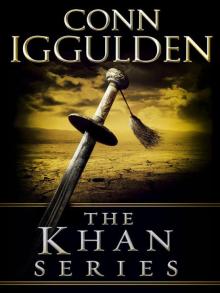 The Khan Series 5-Book Bundle
The Khan Series 5-Book Bundle Tollins 2: Dynamite Tales
Tollins 2: Dynamite Tales Tollins: Explosive Tales for Children
Tollins: Explosive Tales for Children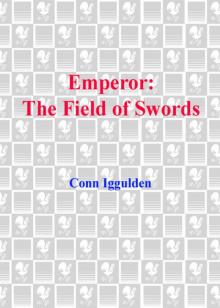 The Field of Swords
The Field of Swords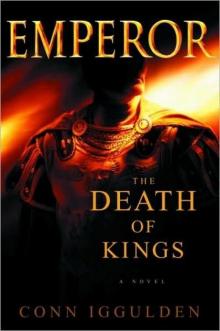 The Death of Kings
The Death of Kings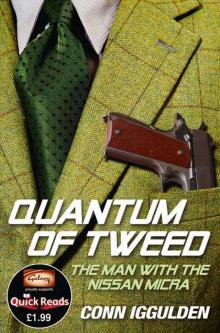 Quantum of Tweed: The Man With the Nissan Micra
Quantum of Tweed: The Man With the Nissan Micra Bones of the Hills
Bones of the Hills Genghis: Birth of an Empire
Genghis: Birth of an Empire The Gates of Rome
The Gates of Rome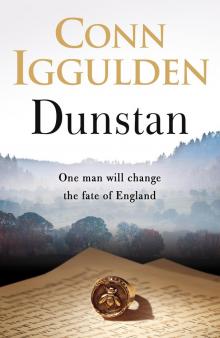 Dunstan
Dunstan Fig Tree
Fig Tree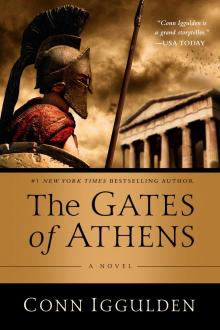 The Gates of Athens
The Gates of Athens Stormbird
Stormbird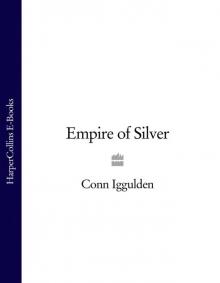 Khan: Empire of Silver
Khan: Empire of Silver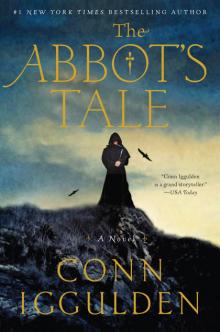 The Abbot's Tale
The Abbot's Tale Gengis: Lords of the Bow
Gengis: Lords of the Bow The Gods of War
The Gods of War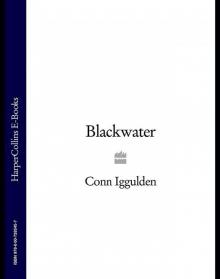 Blackwater
Blackwater Ravenspur: Rise of the Tudors
Ravenspur: Rise of the Tudors Wars of the Roses: Trinity (War of the Roses Book 2)
Wars of the Roses: Trinity (War of the Roses Book 2) The Gods of war e-4
The Gods of war e-4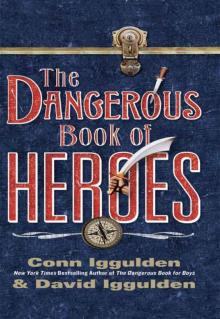 The Dangerous Book of Heroes
The Dangerous Book of Heroes Stormbird wotr-1
Stormbird wotr-1 Emperor: The Death of Kings
Emperor: The Death of Kings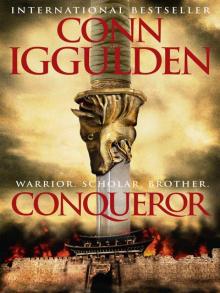 Conqueror (2011) c-5
Conqueror (2011) c-5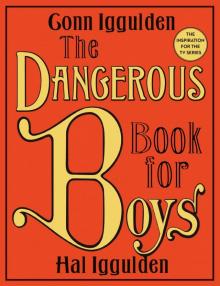 The Dangerous Book for Boys
The Dangerous Book for Boys Genghis Lords of the Bow
Genghis Lords of the Bow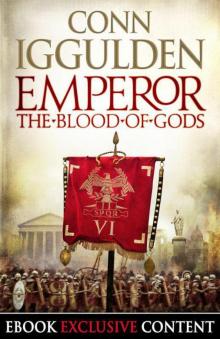 Emperor: The Blood of Gods (Special Edition) (Emperor Series, Book 5)
Emperor: The Blood of Gods (Special Edition) (Emperor Series, Book 5) The Emperor Series: Books 1-5
The Emperor Series: Books 1-5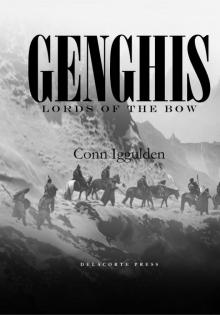 Lords of the Bow c-2
Lords of the Bow c-2 Lords of the Bow
Lords of the Bow Quantum of Tweed
Quantum of Tweed Wars of the Roses 01 - Stormbird
Wars of the Roses 01 - Stormbird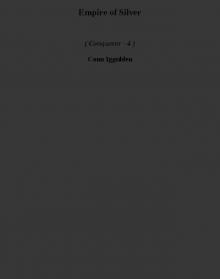 Empire of Silver c-4
Empire of Silver c-4 Birth of an Empire
Birth of an Empire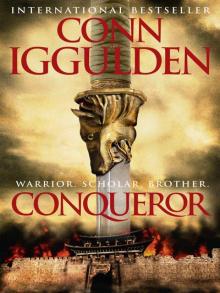 Conqueror (2011)
Conqueror (2011) Wars of the Roses: Bloodline: Book 3 (The Wars of the Roses)
Wars of the Roses: Bloodline: Book 3 (The Wars of the Roses) Bones Of the Hills c-3
Bones Of the Hills c-3 Empire of Silver
Empire of Silver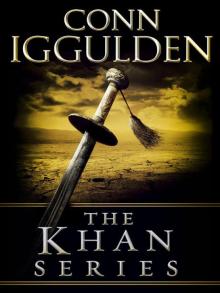 The Khan Series 5-Book Bundle: Genghis: Birth of an Empire, Genghis: Bones of the Hills, Genghis: Lords of the Bow, Khan: Empire of Silver, Conqueror
The Khan Series 5-Book Bundle: Genghis: Birth of an Empire, Genghis: Bones of the Hills, Genghis: Lords of the Bow, Khan: Empire of Silver, Conqueror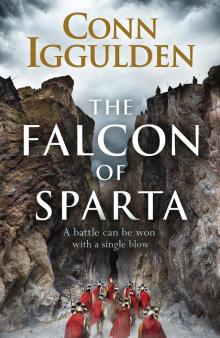 The Falcon of Sparta
The Falcon of Sparta Explosive Tales for Children
Explosive Tales for Children